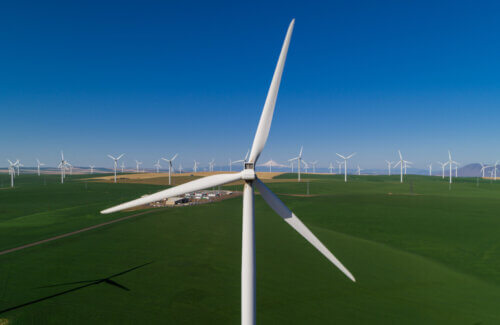Recent trade tariffs and increased import constraints within the U.S. onshore wind energy industry may lead to higher overall costs, posing a threat to project feasibility and potentially hindering growth within the sector, according to a recent analysis from Wood Mackenzie.
Wood Mackenzie
The analysis, titled “Trade war impacts US onshore wind energy,” reveals that proposed tariffs of 25% on imports from Mexico and Canada, along with an additional 10% on imports from China, could elevate U.S. onshore wind turbine costs by 7% and overall project expenses by 5%, based on the current U.S. supply chain setup.
“Protectionist policies will escalate capital expenditures for wind projects,” stated Endri Lico, Principal Analyst at Wood Mackenzie. “In a scenario featuring average 25% tariffs on all imported goods, the effect could be even more pronounced, with turbine costs potentially increasing by 10% and total project expenses climbing by 7%. This could significantly impact the industry, jeopardizing some projects due to financial factors.”
The U.S. wind industry relies heavily on imports, especially for components such as blades, drivetrains, and electrical systems. In 2023, wind-related equipment imports to the United States were estimated at $1.7 billion, with 41% originating from Mexico, Canada, and China.

Biglow Canyon Wind Farm, Portland General Electric’s inaugural wind farm.
“Tariffs are not an uncommon scenario for the wind sector,” Lico remarked. “Wind stakeholders are anticipating the finalization of the tariff regulations to fully gauge the impact. Tariffs enacted during the previous Trump administration had a minimal effect on the U.S. wind energy sector, while more flexible economic policies may alleviate the repercussions of tariffs.”
According to the report, the proposed tariffs could have a slight effect on U.S. onshore wind energy economics, increasing the levelized cost of energy (LCOE) by 4% in the short term. In a scenario with average 25% tariffs, LCOE could increase by 7%.
“Supply chain participants are awaiting clarity, assessing their alternatives,” Lico mentioned. “We anticipate that wind manufacturers will implement a variety of strategies to lessen the impact of tariffs, including rerouting and reorganizing their supply chains and assembly operations, enhancing U.S. localization, and adjusting their pricing.”
Information item from WoodMac
Filed Under: News

